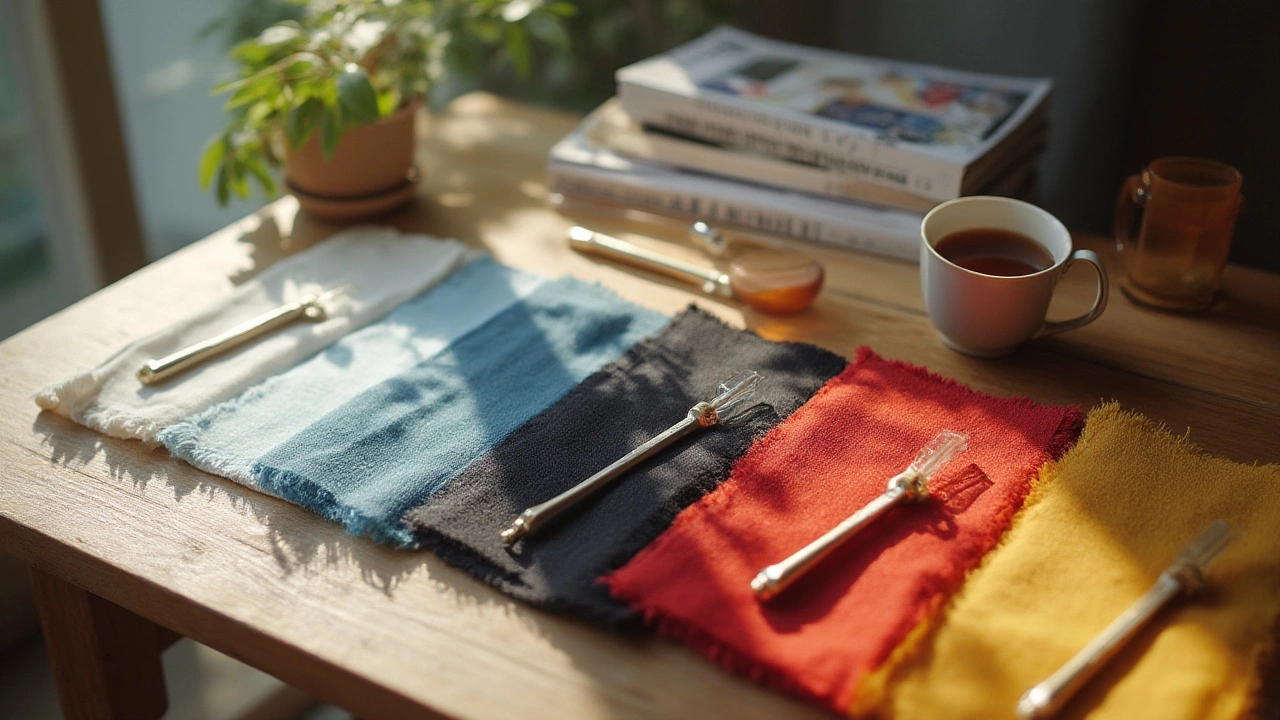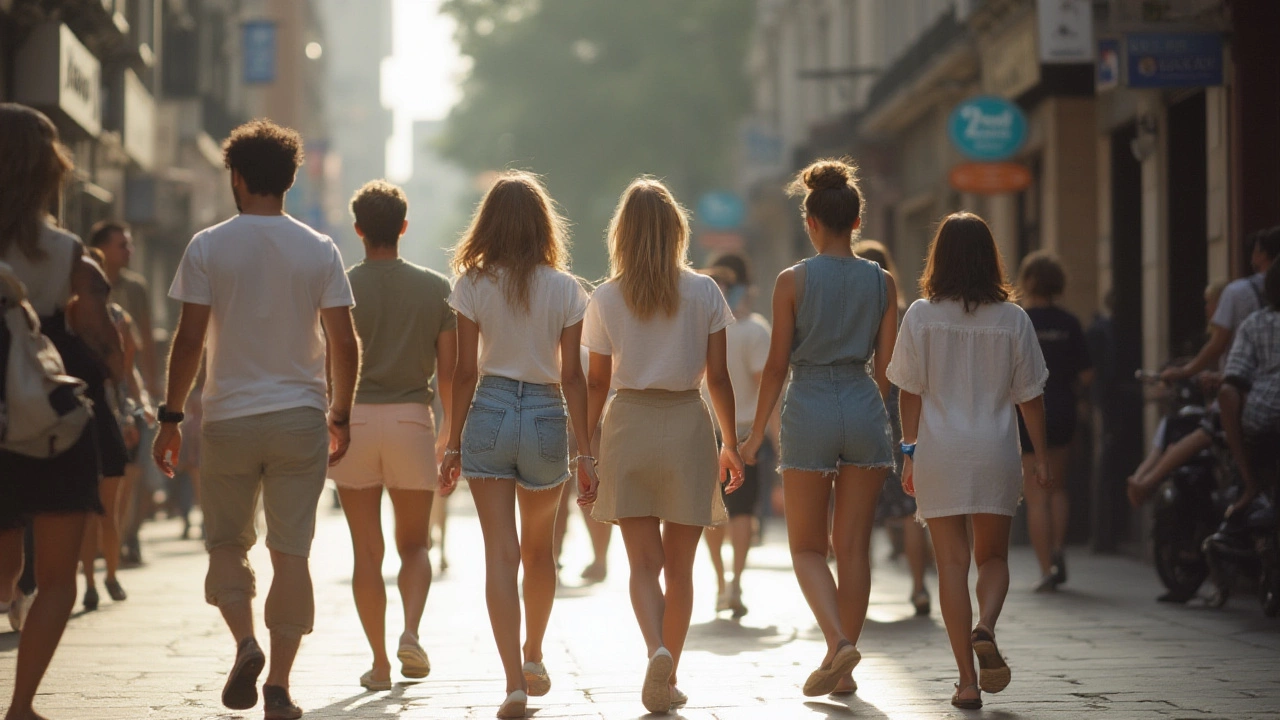You sweat through your shirt just walking to the car. Your skin prickles, your head thumps, and you wonder–am I dressing all wrong for this heat? Here’s something that might surprise you: the color of your clothes actually makes a huge difference in how your body handles summer’s worst. It’s not just folklore—there’s science behind why some colors leave you sweltering while others leave you breezy.
Why Color Actually Changes How Hot You Feel
It’s a common scene: crowds at a summer festival, sporting every color of the rainbow, but the folks in black tees and navy jeans look the most uncomfortable. Heat, after all, is energy—and it behaves in very predictable ways when it hits our clothes. To get why your shirt can roast or cool you, think of how sunlight interacts with color. White and light shades reflect more of the sun’s rays, sending lots of that energy back into the world, while blacks and dark shades soak up the light and trap it as heat. It’s all about absorption and reflection—the same way asphalt gets hotter than concrete.
This effect was first measured in the lab way back in the late 19th century. Physicists set out strips of differently colored cloth in the sun—and found, without fail, black and dark blue fabrics got far hotter than white or yellow ones. The difference can be shocking: black cotton can climb as much as 20°C hotter than white in direct sunlight. And while you might hear that cultural traditions or desert robes favor black for ventilation, the bottom line is, under most normal circumstances, lighter colors just don’t trap as much heat next to your skin.
But color doesn’t act alone. The way a fabric is woven, how loose it fits, or whether it’s sticky and synthetic will change your experience as much as its hue. If you’re in super-dry desert heat with lots of wind (think North African Bedouins), loose black cotton might let hot air escape as fast as it’s absorbed, making the color difference matter less. For the rest of us? Light colors usually win.
White vs. Black: Breaking Down the Classics
The old debate between white and black clothes gets heated every summer—literally and figuratively. So what’s the truth? A research group at the University of California found the surface temperature of black cotton shirts placed in full sun could get up to 10-20% hotter than white shirts. Even standing still, a black T-shirt traps radiant energy, turning your torso into a little furnace. On the flip side, white clothing reflects nearly all visible wavelengths of light, so it absorbs almost none of the summer sun’s punishing rays.
But is white always king? Some researchers in Japan found that while black warmed up faster, certain thick weaves of black cotton actually let hot air escape more rapidly—if the fabric was loose and flowy, with big air gaps. So, the real battle lines are drawn between white and dark, but fabric thickness and fit call some shots too. Still, for average folks in T-shirts, polos, and sundresses, the science is clear: whites, pastels, and very pale colors keep your body measurably cooler. Think of your body as a little engine. When you wear black in the sun, you’re making that engine work overtime just to offload extra heat, often trapping humid air close to the skin.
Here's a quick look at some real numbers, using a table, because scientists love to measure everything:
| Shirt Color | Surface Temp in Sun (°C) |
|---|---|
| White | 31 |
| Pale Yellow | 33 |
| Light Blue | 34 |
| Grey | 37 |
| Black | 45 |
Check out those numbers! Black’s nearly twice as hot as white. So if you want to stop sweating buckets, skip the all-black look (even if it’s super-chic) on the hottest days. In fact, steer anywhere away from dark navy, deep green, or charcoal, since they stack up pretty close behind black in the heat trap race.

The Science Behind Other Colors and Why Some Pastels Work Better
Life isn’t just black and white—color choices are endless, and a lot of us gravitate toward pastels or bright colors when summer comes around. Are these choices smart? Yes, in ways that go beyond style. Shades like pale blue, mint green, light pink, and beige reflect a lot of sunlight, though maybe not quite as perfectly as stark white. Pastels often come out only a few degrees warmer than white in direct sun. Bold colors like red or bright orange can be a little warmer, but they still beat black or navy by a long shot.
What about the material? This is where it gets interesting: regardless of color, natural fibers like cotton and linen outperform synthetics for coolness. That’s because they breathe better, wick sweat away, and don’t cling. But if you have to pick from what’s in your closet for a scorcher, go pale and loose. Choose less saturated hues, since high-pigment fabrics collect more heat than soft, washed-out ones. Ever see Olympic athletes in pale blue or white uniforms during hot weather events? That’s no accident—it’s backed up by decades of sports science and performance studies.
Even for those who swear by all-black everything, here's a tip: if you must go dark, pick wide, loose-cut clothes in linen or gauzy blends. Or, try layering a white or light colored tee under a looser dark top so the hottest layer isn’t right on your skin. The more insulation - meaning air between skin and fabric - the less dramatic the heat effect becomes. That's the same reason white robes work in the Middle East – they create a heat buffer, especially when winds blow. Still, for most city dwellers or beachgoers, if you want to keep things breezy, the pastel section is calling your name.
Tips for Dressing Smart: Beyond Color
Sure, color is key, but it’s part of a bigger puzzle. If you really want to hack the heat, here are some concrete ways to stay cool while looking stylish:
- Stick to loose fits. The more fabric floats off your body, the easier it is for air to circulate and sweat to evaporate. Tight jeans or fitted tops? That’s asking for a heat rash.
- Natural fibers are the real MVP. Cotton, linen, bamboo all breathe better and don’t trap heat like polyester or nylon.
- If you sweat a lot, avoid colors that show sweat stains—pale blue and pastels stay cooler, but white hides marks best.
- Layer lightly. A loose outer layer (like a white linen button-up) over a tank top can give shade while allowing airflow.
- Light hats or scarves add shade to your skin. Go for wide-brimmed hats in pale shades for extra face protection.
- Opt for UV-blocking clothes if you burn easily. Some fabrics are now rated for UPF (ultraviolet protection factor), helping stop sunburn as well as heat.
- Accessorize smart. Light, reflective sunglasses help your eyes, and non-metal jewelry won’t heat up in the sun.
- If you have to wear dark for work or style, stay in the shade as much as possible or choose perforated and breathable fabrics.
- Do a quick hand test before heading out—hold your shirt in a sunbeam and see if it gets hot in seconds.
It’s wild how something as basic as shirt color makes such a difference. The world’s hottest days aren’t the time to rethink physics—light colors and smart choices have saved me on more sticky afternoons, and they’ll work for you too. Next time you stroll out under a blazing sun, think about treating your clothes as your personal thermostat.

